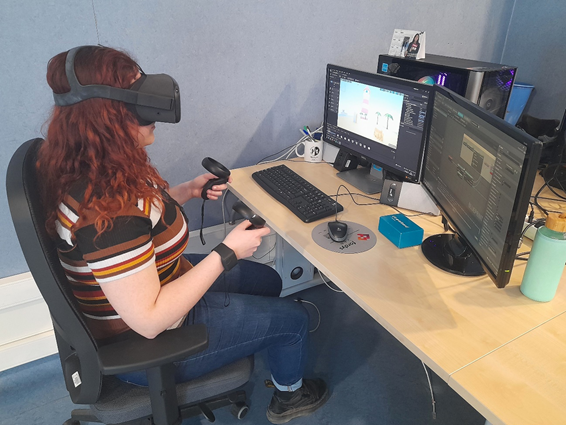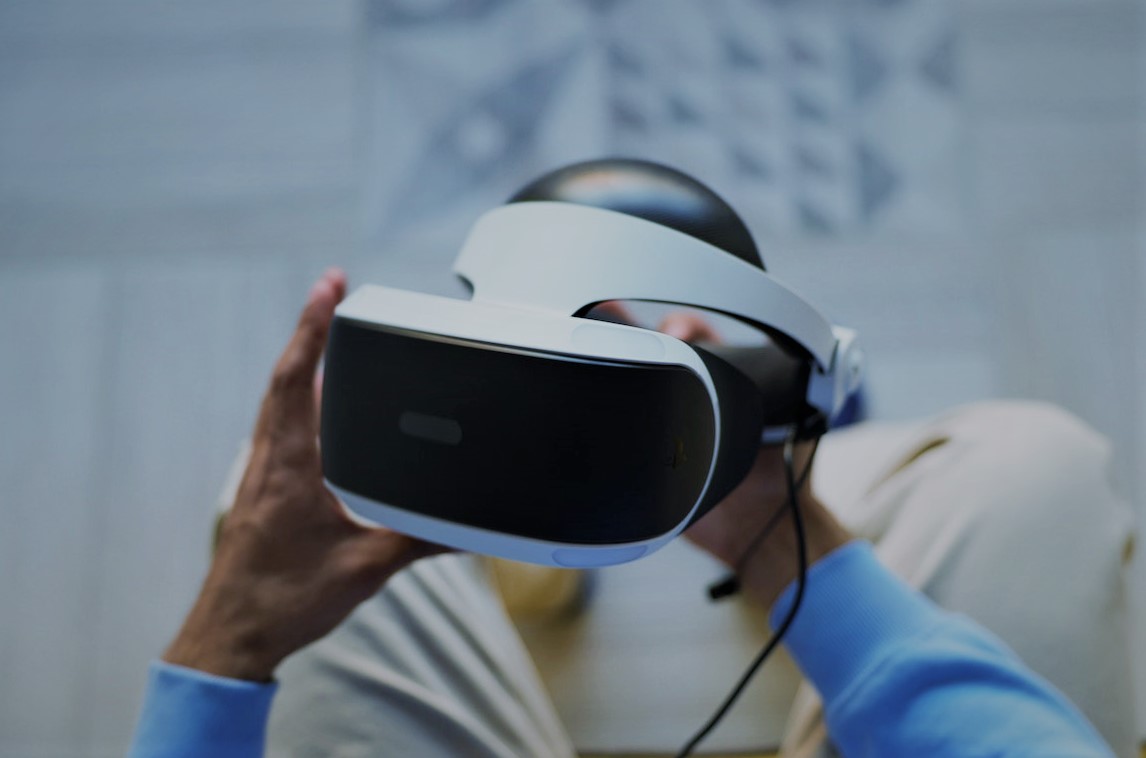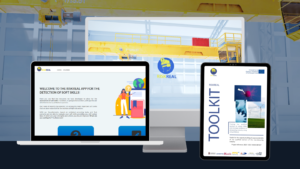Physiological user data provides objective information about his/her mood and behaviour. In recent years, the combination of immersive Virtual Reality (iVR) and biosensors has become increasingly used. iVR creates a strong sense of immersion that makes the user feel the situation is real while being in a safe environment. Also, the physiological reactions experienced in the virtual environment are similar to those in a real situation. The combination of iVR and biosensors allows the users to train soft skills by adapting the environment and tasks to their physiological data
iVR is a technology that is increasingly used in areas such as medicine, education, and industry. It is defined as a virtual experience in which the user is completely immersed, thanks to a Head-Mounted Display (HMD). This sensation is enhanced by the sound played from the device and the natural control of the application through the controllers or trackers. iVR allows the users to disconnect completely from the real world, making them lose awareness of time or space. After a few minutes of use, the users do not know how long they have been wearing the iVR or what is going on around them on the outside.
There are many types of HMDs. In the past, they worked with a mobile device and had no interaction. Today, the trend is to improve the quality and make the interaction with the environment more natural. However, the higher the quality and usability, the greater the sense of immersion perceived by the user.
iVR offers a highly immersive sensation that makes the user feel and behave as they would in a real-life situation
The iVR environments produce the same reactions in the user as the real situation. For example, if a user with arachnophobia is confronted with a virtual environment with spiders, he/she will start sweating, and his/her heartbeat will increase. Physiological reactions provide objective and real-time data about a person’s mood and behaviour. Devices designed to measure such physiological data are known as biosensors. The most common data obtained from biosensors are heart rate (HR), electrodermal activity (EDA), electroencephalographic data (EEG), and eye tracking (ET).
Biosensors have been used for many years, mostly in health-related areas. However, more use is now beginning to be made of them. The data output of biosensors can be complicated to understand for a non-expert, but sensors are becoming increasingly user-friendly, and understanding the results is easier for the user. This facilitates their inclusion in different areas, such as industry or education.
Biosensor outputs are objective because the user does not know how to control his/her physiology. For this reason, they provide much more reliable and accurate information than a survey or interview.

Therefore, the use of biosensors during an iVR experience provides information about the user’s mood and behavior in the same real-life situation. In this context, iVR is the perfect medium to train the user in different controlled and safe situations before he/she are confronted with them in real life. Such experiences can help researchers learn more about human behavior, including different rates and patterns of learning.
The combination of iVR and biosensors allows real-time adaptation of applications to the needs of each user
Understanding how users relate to the application can help create customized applications tailored to their needs. The data extracted from the biosensors can be used directly in iVR applications as a method of interacting with the environment. For example, skin conductance data can be used to determine whether a user is more relaxed or nervous and adapt the situation accordingly. Personalization of applications is a determining factor in user satisfaction, which also increases user engagement with the application.
Artificial Intelligence (AI) systems are trained using data from multiple users to enable them to understand and categorize the users and their physiological data. This enables the creation of applications that can adjust their difficulty level to match the user’s learning process, preventing frustration and providing motivation to continue learning.

iVR is a perfect environment for soft skills training and biosensor adaptation supports this training
Soft skills are social, emotional, problem-solving, and behavioral skills that allow people to perform better in any situation and achieve better results. They can be difficult to define and work on, but they are essential for success. Examples include creativity, leadership skills, resilience, teamwork, and time management. Such skills are only developed effectively when the user is confronted with real-life situations. In other words, a person can know a lot about creativity but not be creative because he/she has not been presented with the situation in which to use that knowledge.
Therefore, iVR is an excellent medium for creating environments in which users can develop these soft skills. With the data extracted from biosensors, the situations can be tailored to the needs of each user, making training more personalized and effective. Multiple skills can be trained simultaneously.
For example, a person can be asked to solve a problem in a virtual situation. To solve this problem, he/she has to be creative and complete the proposed task before the time runs out. In addition, he/she can delegate tasks to other avatars or ask them for help. Biosensors can be used to increase the difficulty level based on the user’s physiological data or to see how the user performs despite being stressed. With iVR, this situation can be repeated as many times as desired until the user feels he/she has done well and is satisfied with his/her performance. In this way, he/she can train the situation and when it happens in the real world know how best to act and what his/her weaknesses and strengths are.
To sum up, iVR environments provides users with a sense of being in a real situation, causing their physiology to react in a similar way to the real situation. Some AI systems enable applications to adapt to the needs of each user based on objective data extracted from biosensors that provide information about their mood and behavior. iVR environments provide a realistic context for training soft skills that are essential for success. These skills can be challenging to train in a practical way, but iVR, with the aid of biosensors and AI systems, provides a personalized and effective training experience.
Written by: Henar Guillen-Sanz
from Universidad de Burgos





